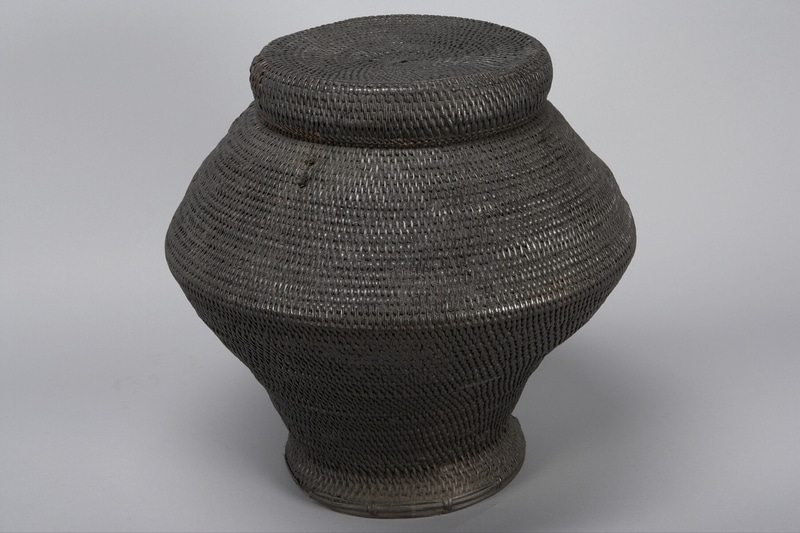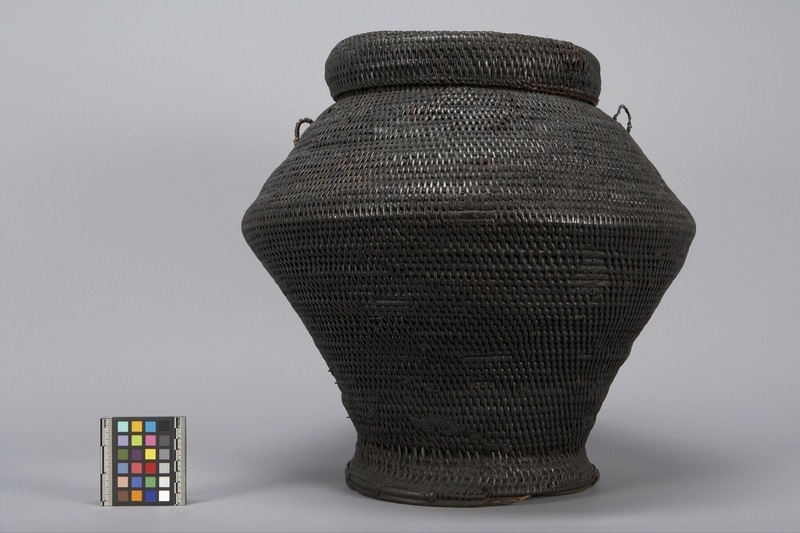Basket Item Number: Ia18 a-b from the MOA: University of British Columbia




Description
Tall, black, rounded woven basket (part a) with a flat, fitted lid (part b). Bottom made of cut and stripped rattan fibre coiled in a tight weave forming a short round neck which enlarges into an unequal biconical shape, larger at the top than at the bottom. Two wire handles are below the neck and opposite each other; one is wrapped in rattan fibre while the other is not. Bamboo strip at indented base is broken. The lid is a shallow cylindrical shape with rattan fibre coiled into a tight weave. Black patina on surface.
History Of Use
Basket making remains a living craft among all the Northern Luzon peoples. Baskets are used for household storage and for transporting produce from the fields to the habitation sites. Occasionally baskets were made for ceremonial use. Decoration was created with simple interlaced braids and a combination of weaves which also served to provide strength. Kalinga basketry shapes are believed to have been inspired by Chinese jars and pots traded into Luzon before the 16th century.
Cultural Context
rice storage
Item History
- Made in Luzon, Philippines before 1982
- Owned by Dorian Coe before July 24, 1980
- Received from Dorian Coe (Seller) and Museum of Anthropology Donations Fund (Funding source) on July 24, 1980
What
Who
- Culture
- Kalinga
- Previous Owner
- Dorian Coe
- Received from
- Dorian Coe (Seller) and Museum of Anthropology Donations Fund (Funding source)
Where
- Holding Institution
- MOA: University of British Columbia
- Made in
- Luzon, Philippines
When
- Creation Date
- before 1982
- Ownership Date
- before July 24, 1980
- Acquisition Date
- on July 24, 1980
Other
- Item Classes
- basketry
- Condition
- good
- Current Location
- Case 81
- Accession Number
- 0638/0017 a-b